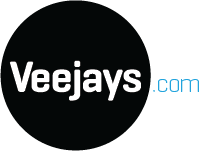Any major event these days involves spectacular animations and projections, whether it’s the opening of the Amsterdam Maritime Museum, the Edison Gala, The Voice in concert, or Madonna’s spectacular Super Bowl halftime show. Images like that are created by a VJ, the visual counterpart to a DJ. This new and creative high-tech scene has seemingly popped up overnight, and is all about visual illusions and creating a virtual background.

It’s used in everything from ultra-loud techno—there’s a reason some people call it “virtual party drugs”—to opera productions or museum exhibitions involving dance.
The Netherlands is a global leader when it comes to this new media art. VJing collectives like Vision Impossible, Eyesupply, and Kijkbuiskinderen perform worldwide, often working with well-known Dutch DJs like Tiësto and Afrojack.
True VJs create their own images, using a camera and video editing software, Photoshop and After Effects, 3-D programs like 3ds Max or Cinema 4D, or even special mapping software.

It can take months to prepare show, but the results are freaking awesome. During the show, timing is everything. The VJ is responsible for showing the proper visuals at the proper time.
For events like fashion shows or concerts, getting it just right is of crucial importance. VJs have an extensive kit of digital effects they can use to create the perfect atmosphere and tempo at any party.
That includes video mixers like the Roland V800 HD mixer, and mixing software like Resolume or Modul8.
A good VJ collaborates with the DJ, physicians, dancers, and the lighting crew to make sure the audience has the experience of a lifetime.

